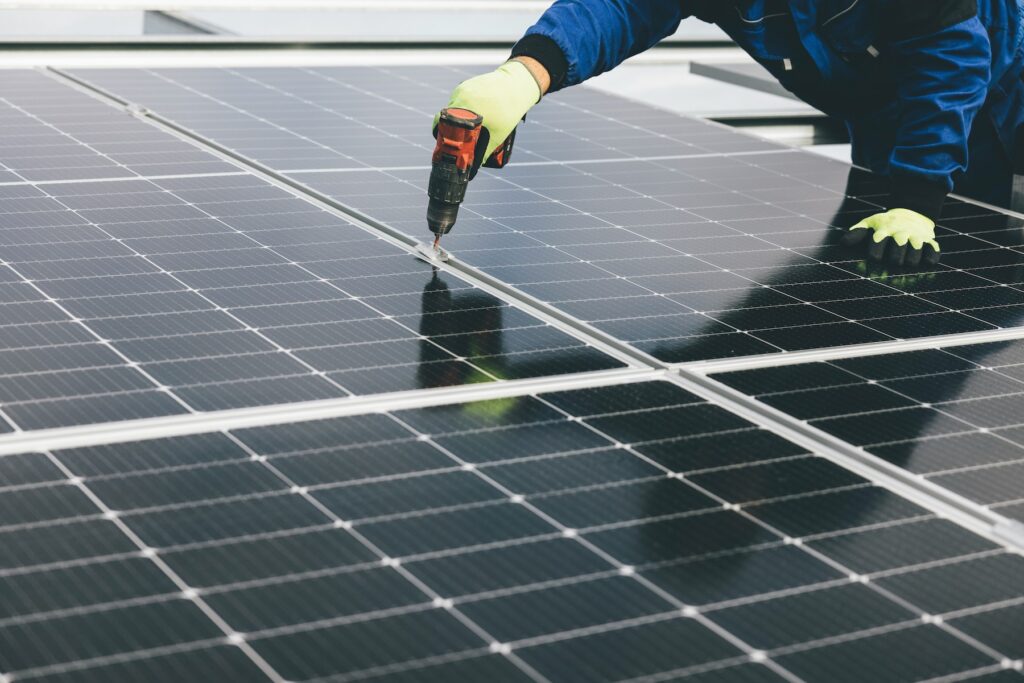Building Automation Systems (BAS) enable energy efficiency by optimizing the operation of building systems, reducing energy consumption, and maximizing the use of renewable energy sources.
Smart 22@ Building/GCA Architects. PHOTO: Rafael Vargas/ArchDaily
Imagine a building that’s not just a structure but a smart entity, capable of optimizing energy consumption, reducing waste, and revolutionizing the way we think about sustainability. Here come smart buildings, where cutting-edge technology and innovative design converge.
Smart buildings, also known as green buildings, leverage Building Automation Systems or BAS to optimize energy efficiency and minimize environmental impact. The significance of the BAS lies in its potential to significantly reduce energy consumption, and lower carbon emissions.
Understanding Building Automation Systems
Building Automation Systems connect different systems, such as HVAC, lighting, security, and more. These systems allow them to work together seamlessly.
BAS consists of a few key components. First, you’ve got sensors that gather data from various systems—things like temperature, humidity, occupancy, and light levels. Then, you’ve got actuators that respond to these sensors’ signals and control physical devices, like motors, valves, and switches.
Next up, we have the controllers. They receive data from sensors, process it, and send commands to the actuators. Controllers can be centralized or spread throughout the building, depending on the complexity of the system.
All these components need to communicate with each other, and that’s where the communication infrastructure comes into play. It’s the network that connects the sensors, controllers, and actuators. It can use wired or wireless networks to transmit data and commands.
Now, how do we interact with this amazing system? Well, that’s where the user interface comes in. It could be a web application, a mobile app, or even a dedicated control panel. This interface allows building operators and occupants to monitor and control the BAS.
Energy Monitoring and Optimization
BAS is not just about controlling the lights and air conditioning. It goes beyond that. Energy monitoring is the first step toward effective energy management. BAS installs sensors and meters to track energy consumption in real time. The system measures electricity, water, gas, and even renewable energy generation within the building.
By collecting all the necessary data, BAS gives building operators and energy managers a clear picture of where energy is being used and where there’s room for improvement. Once we have the data, it’s time for energy optimization.
Optimization is done through load shedding, HVAC optimization, lighting control, equipment optimization, and renewable energy integration.
Load Shedding and Demand Response
When energy-demand peaks, BAS knows how to shed non-essential loads. It can prioritize critical systems and adjust energy consumption based on signals from utilities. This way, we optimize energy usage without sacrificing comfort or productivity.
HVAC Optimization
BAS controls the heating, ventilation, and air conditioning (HVAC) systems that tend to consume a lot of energy. It monitors occupancy, temperature, humidity, and outdoor conditions to optimize HVAC operation.
Lighting Control
You no longer have to worry about wasted energy from unnecessary lighting. BAS can use occupancy sensors to turn off lights in unoccupied areas. It can also adjust lighting levels based on natural light availability and create smart schedules.
Equipment Optimization
BAS doesn’t just stop at HVAC and lighting. It keeps an eye on other equipment too, like pumps, fans, and motors. By monitoring energy usage and performance data, BAS can detect abnormalities and inefficiencies. This proactive approach saves energy and extends the lifespan of the equipment.
Renewable Energy Integration
With solar panels and other renewable sources becoming popular, BAS plays a vital role in optimizing their usage. It monitors energy generation from renewables and makes sure it’s used wisely within the building. By reducing reliance on the grid and maximizing clean energy utilization, BAS takes sustainability to the next level.
How Building Automation Systems Help in Promoting Sustainability
BAS promotes sustainability by enabling energy efficiency, resource conservation, maintenance optimization, indoor environmental quality, and the integration of renewable energy. BAS optimizes the operation of building systems and reduces energy consumption. By incorporating BAS, buildings can significantly reduce their environmental impact and contribute to a sustainable future.
At BillionBricks, we also promote sustainability. We made this possible through the construction of net zero homes and communities in different parts of the world.
If you want to learn more about BillionBricks and our net zero homes, visit https://calendly.com/d/y5t-wh7-hdd/call-with-billionbricks
Sources
-
Cisco. (n.d.). What Is a Smart Building? Retrieved from https://www.cisco.com/c/en/us/solutions/smart-building/what-is-a-smart-building.html
-
Gateway Mechanical Services. (2021). Your Building Automation System Essential Guide: How It Works & Why You Need One. Retrieved from https://gatewaymechanical.ca/building-automation-system-essential-guide/
-
KMC Controls. (n.d.). Understanding Building Automation and Control Systems. Retrieved from http://www.kmccontrols.com.hk/products/Understanding_Building_Automation_and_Control_Systems.html
-
MACC. (2022). What Is a Building Automation System? Retrieved from https://info.midatlanticcontrols.com/blog/what-is-a-building-automation-system





